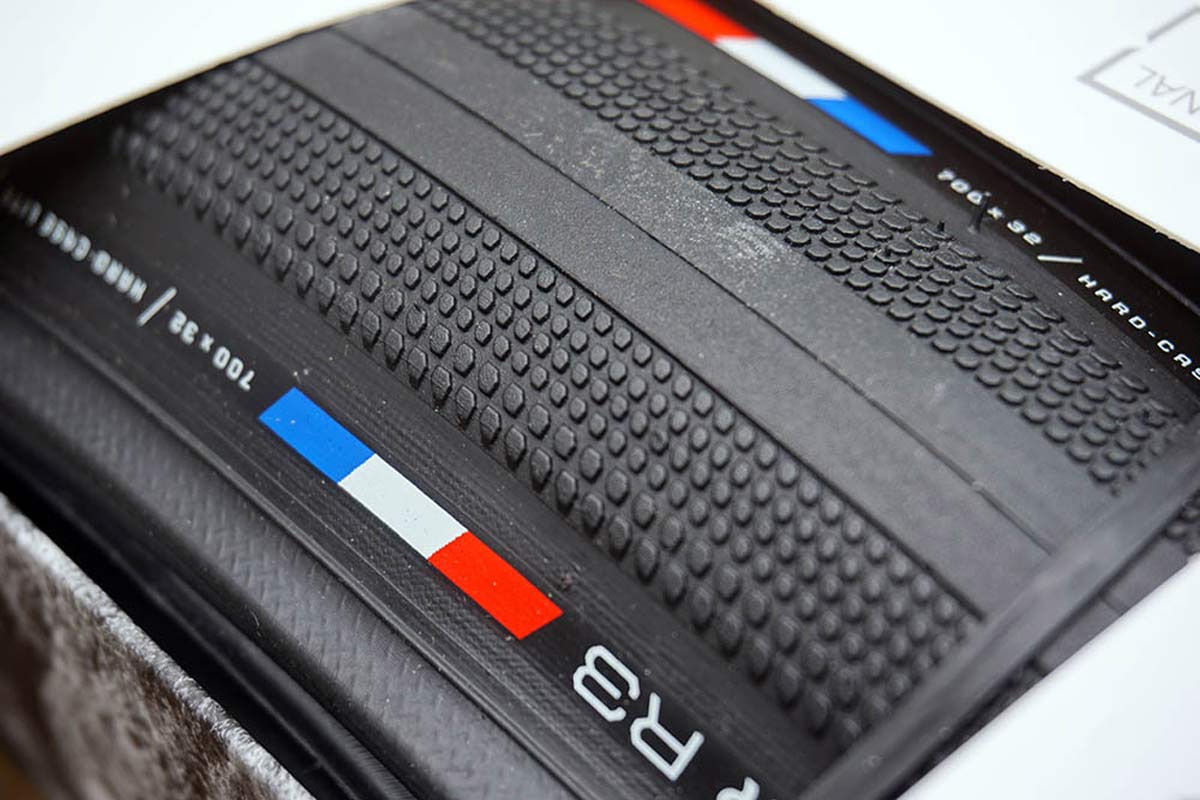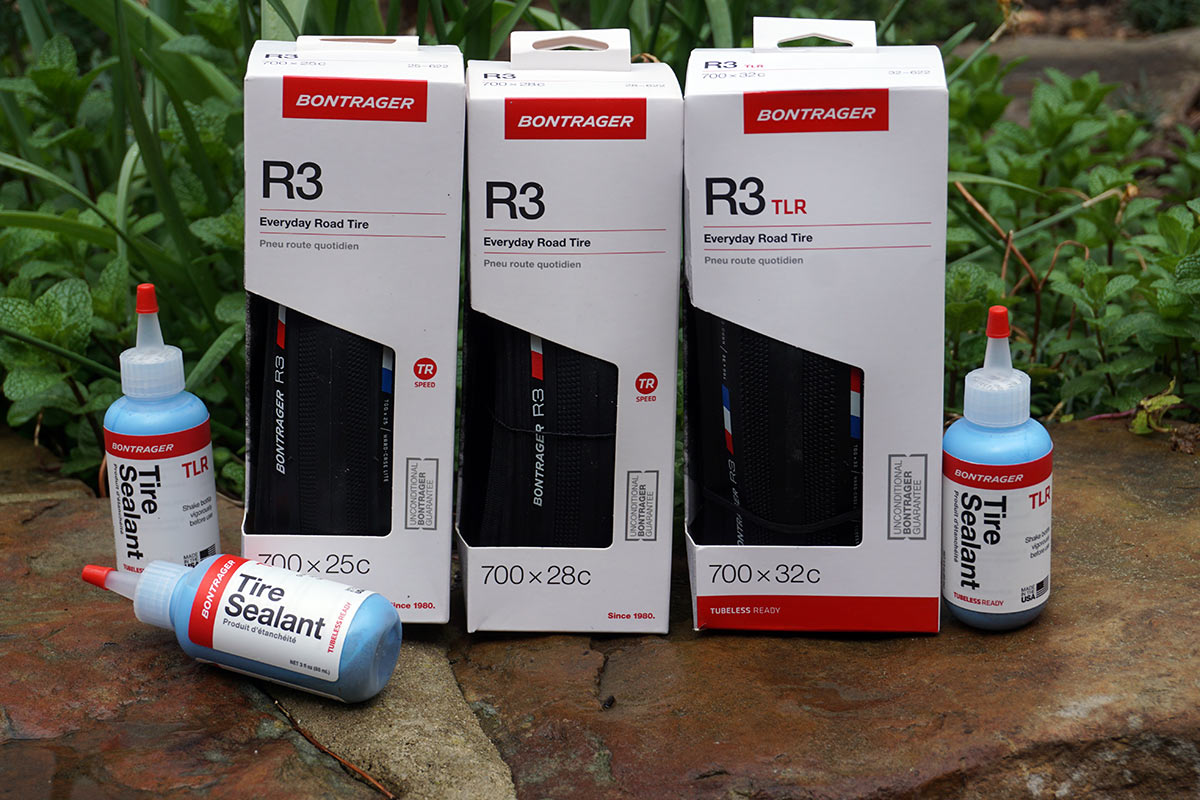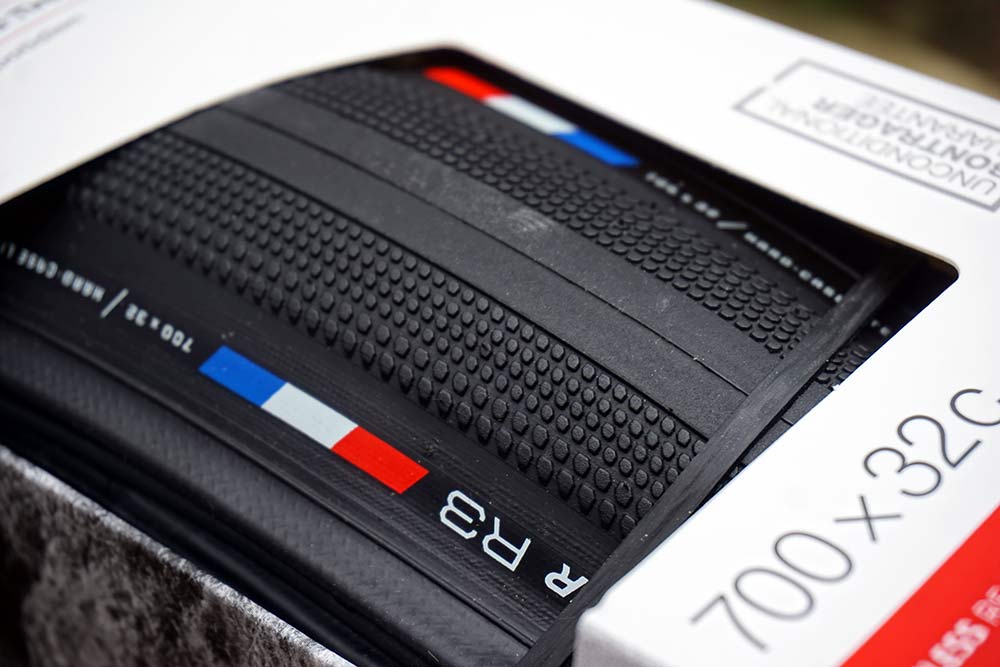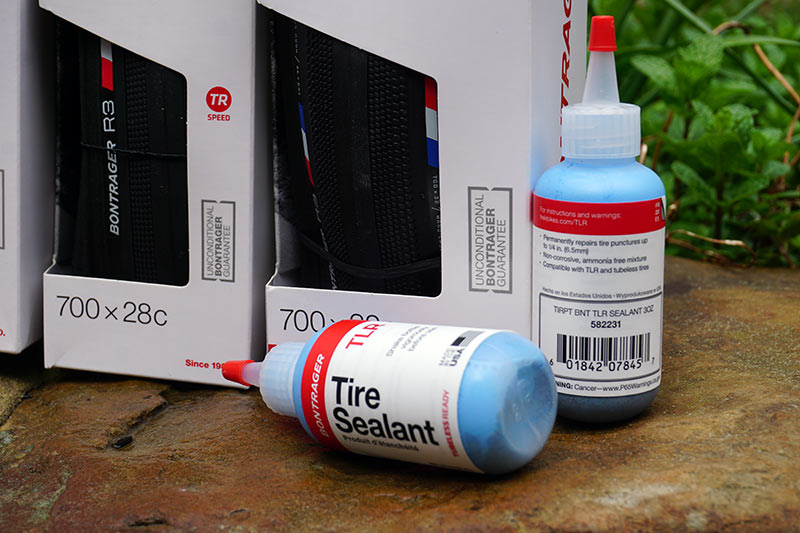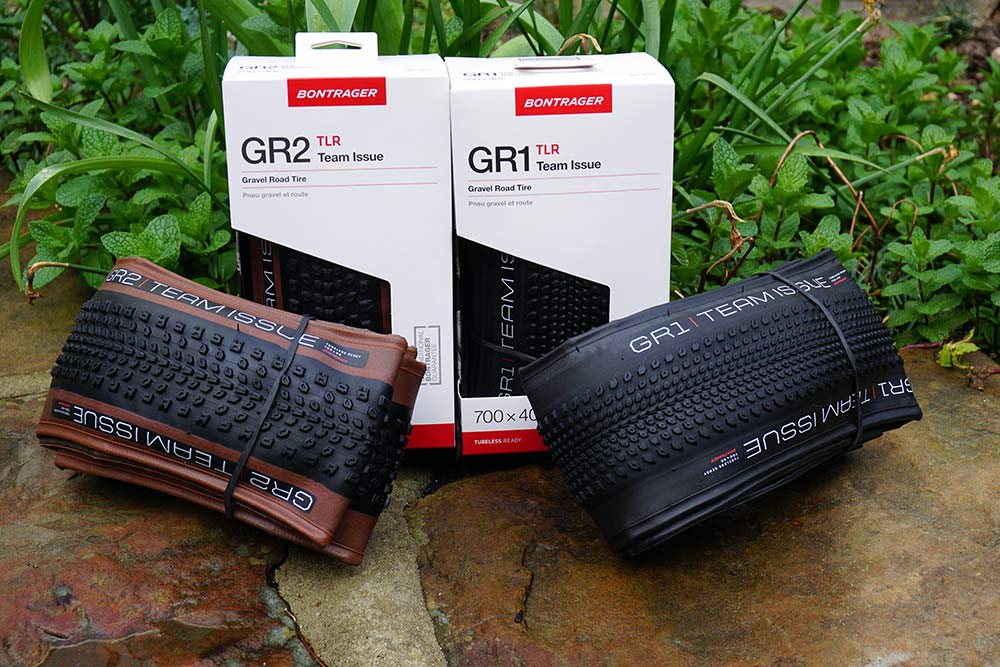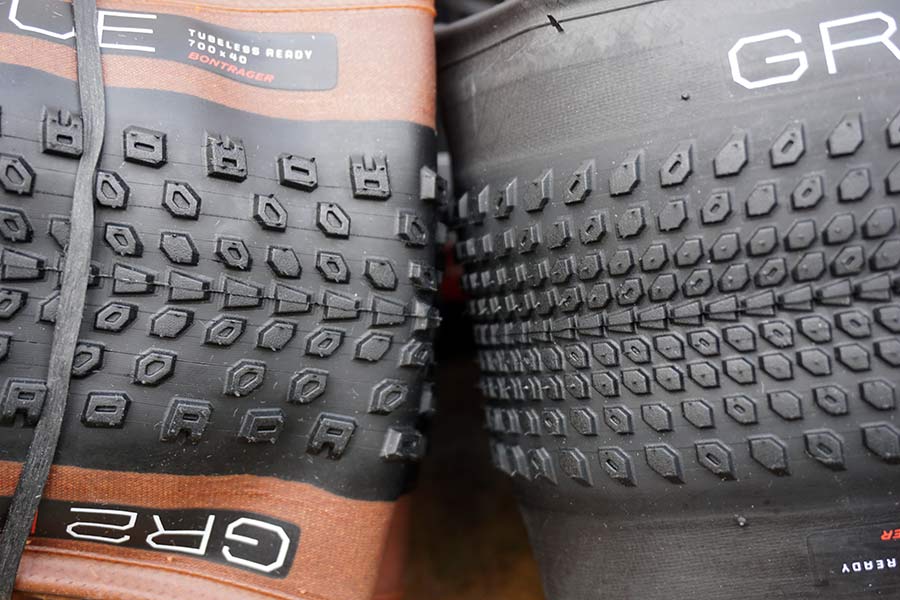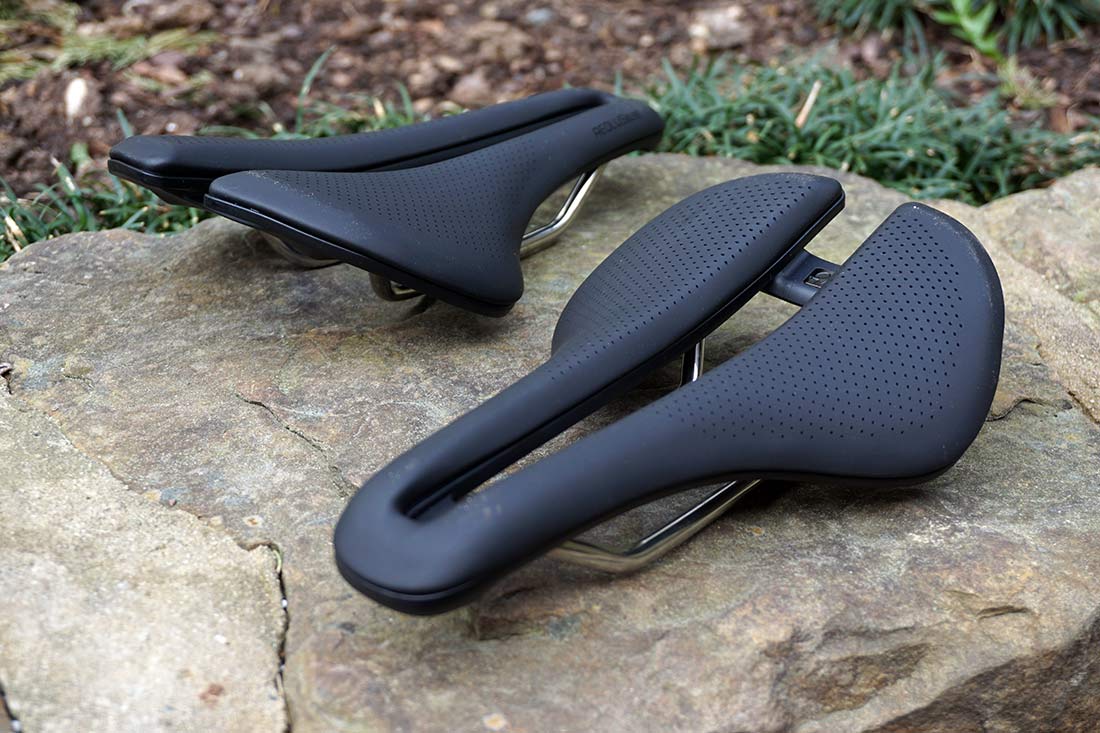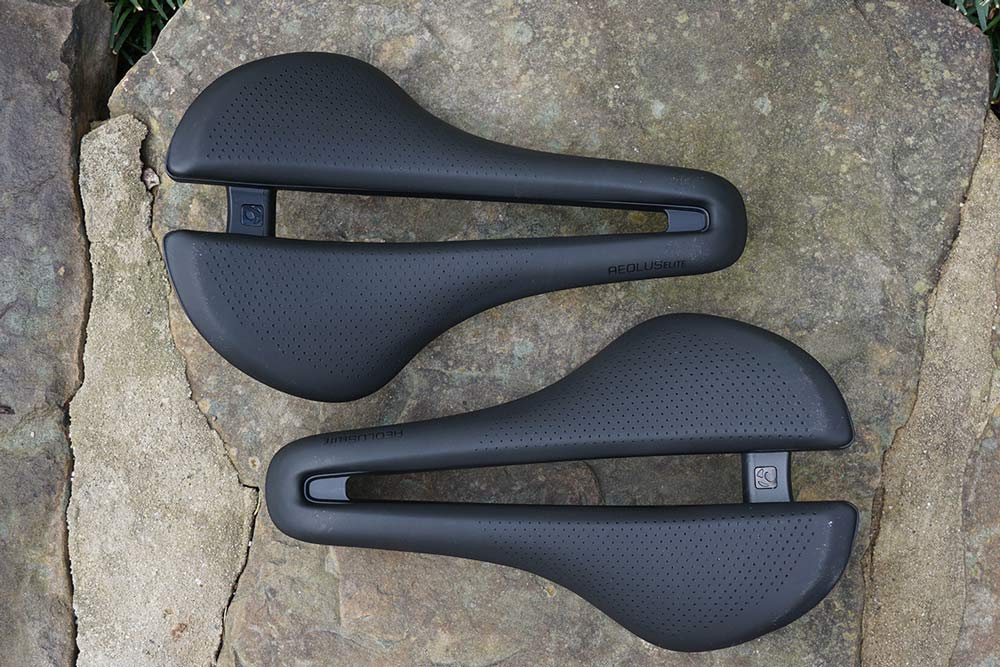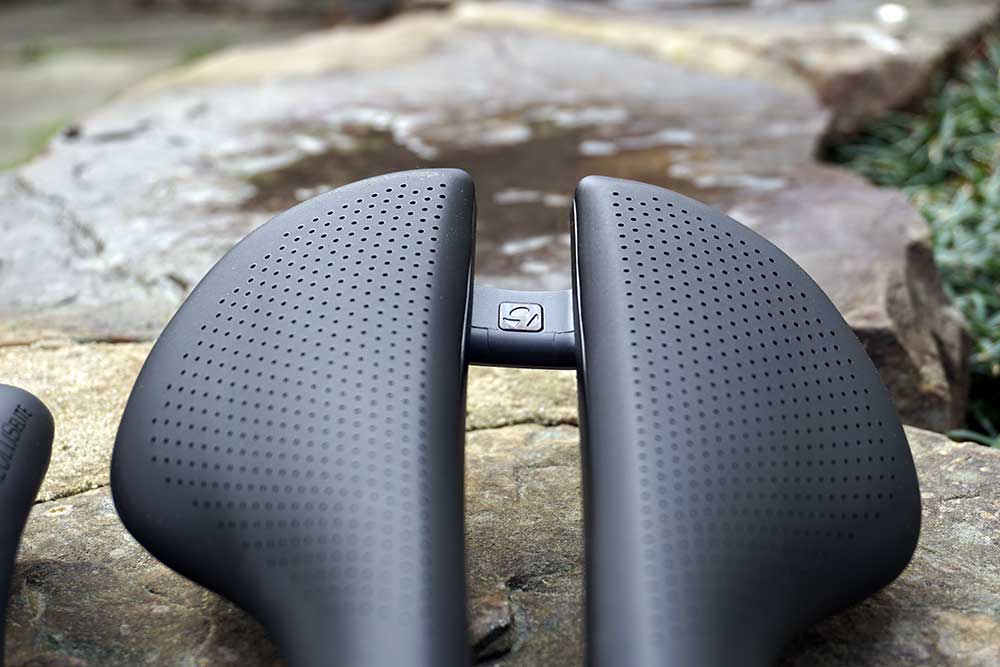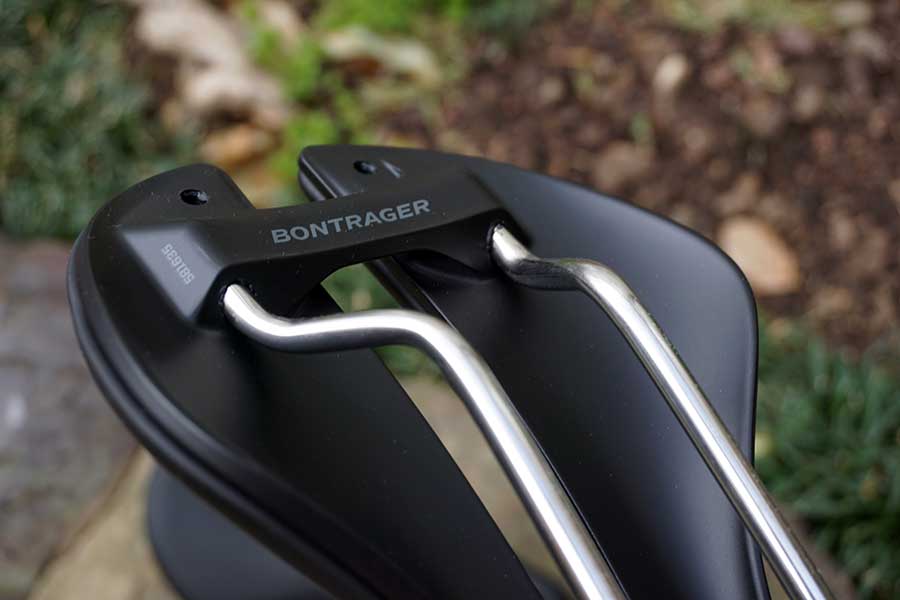Trek’s Bontrager house brand has become a powerhouse of accessories, including wheels, tires, saddles, grips, and much more. Today, they announced an all-new R3 road tire lineup and two new gravel tires, bolstered by new TLR tubeless tire sealant. In addition, there’s a new Aeolus Elite road saddle series, targeted at aero road bikes and aggressive riding positions.
Bontrager R3 Hard-Case Lite road bike tires
The tire line from Bontrager has become quite diverse over the years, now offering a tire for every conceivable sub-discipline of cycling. The R3 series is “mid-high” on the ladder – a step below the R4, but above the R1 and R2 in terms of price and performance. The 3-series line also has two distinct sub-types – the standard R3 performance tire, plus the AW3 (All-Weather), which is focused on puncture protection and grip for poor conditions.
As of today, the standard R3 line is all-new. Equipped with a proprietary TR-Speed compound, improved Hard-Case Lite puncture protection, and an updated tread design, Bontrager claims that they’re faster, longer-lasting, and have better flat resistance than ever before.
The center strip is smooth for fast rolling in a straight line. It’s the cornering sections that differentiate the new R3 from the rest, and its light tread pattern varies in depth per tire size.
How much better is the new tire? Bontrager claims that the TR-Speed compound results in a whopping 75% increase in tread life. It also has a new breaker belt made from woven Nylon105, resulting in a 22% increase in flat protection. All that, and they’re still quite competitive in weight:

The Bontrager R3 Hard-Case Lite comes in three varieties: Standard ($55 – 700×23, 700×25, 700×28), Reflective ($60 – 700×25, 700×28), and TLR Tubeless ($65 – 700×32). All come equipped with the 30-day Unconditional Bontrager Guarantee.
Bontrager TLR tubeless tire sealant
Bontrager has offered their TLR sealant for many years, but this new, blue formula promises improved air retention and a longer-lasting liquid that doesn’t dry out as quickly. It’s still non-corrosive and ammonia-free, making it safe for virtually any tubeless-ready tire or rim. It comes in 3-ounce bottles for $3.99, or quart bottles for $27.99.
What about gravel?
Last month, Bontrager released the new Aeolus Pro 3V TLR carbon gravel bike wheels. What they failed to mention at the time are these new GR1 and GR2 gravel tires to go with them. Two versions are offered, the GR1 and GR2, both with tubeless ready casings, Inner Strength sidewall cut protection, and supple 120tpi construction.
Both are $65 each, and both come in black or tan-wall color options. The only real difference is the tread patterns, with the GR2 getting a more aggressive design with larger knobs and more spacing between them.
They’re available only in 700×40 sizes, actual weights are 399g (GR2) and 436g (GR1). Available now.
Bontrager Aeolus aero road saddle series
Bontrager isn’t new to saddles, but this is their first entry into something aimed purely at the ‘aero road’ subset of road bikes. All feature a full cutout, shorter overall length, and wider nose (which has become quite the trend lately…examples here, here and here) intending to relieve soft tissue pressure for riders of all genders and body types.
“When road cyclists rotate forward and tuck into an aero position,” said Justin Henkel, Trek’s Director of Product for Saddles and Essentials, “they interact more with the front of their saddle. That can cause a lot of pressure and discomfort. But Aeolus saddles solve this problem. They’re designed specifically for comfort and targeted support in an aero position.”
There are three distinct models in the new lineup of Bontrager Aeolus saddles, each offered in 145 and 155mm widths. The top of the line is the Aeolus Pro ($230, 170-173 grams) with OCLV Carbon rails, a carbon-reinforced shell, and thin padding to keep weight to a minimum.

Aeolus Elite ($150, 219 – 222 grams claimed, actual weights shown above, difference is the widths) has more padding and Austenite rails. Aeolus Comp ($90, 286 – 289 grams) doesn’t identify the rail type, but we have to guess they’re chromoly to keep the cost down.
